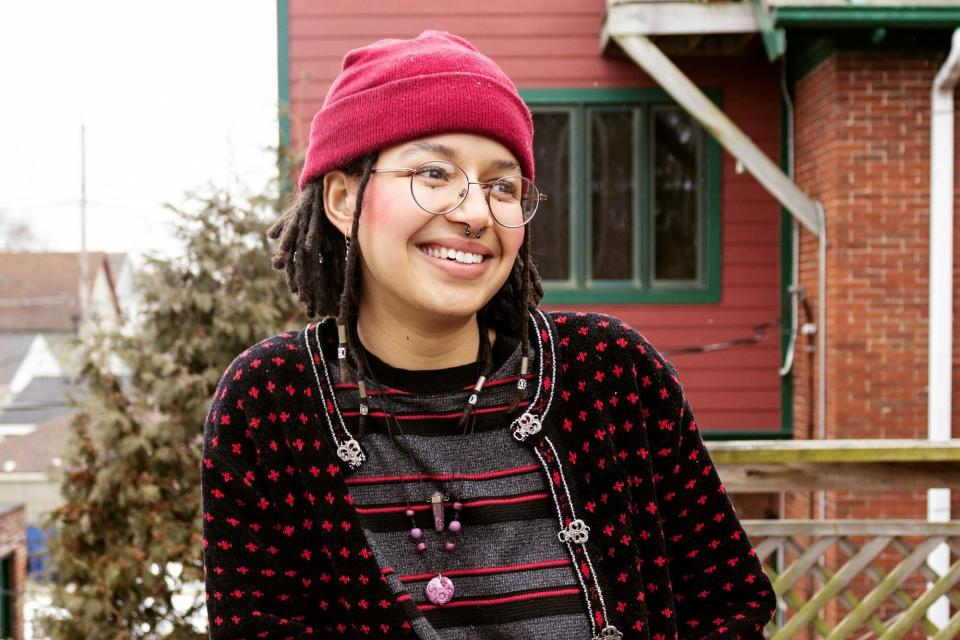3 Myths About Being Non-Binary You Shouldn't Believe

Getty Images
The gender binary—or the stratification of all people into the two categories of man or woman—organizes many people's lives invisibly, but pervasively. From school sports, clothing stores, and the Grammy's to who gets political rights and legal protections, the gender binary is everywhere.
The gender binary has always been contested—feminists questioned the rules that rewarded men financially, politically, and socially while punishing women. Queer, butch, and trans folks historically fought against the Three Article Rule, a law targeting so-called "crossdressers," or anyone who did not conform to their assigned gender. Under the Three Article Rule, anyone found not wearing at least three articles of clothing corresponding to their "correct" gender was arrested. Eventually, the term non-binary (or "enby") developed from the queer zine culture of the '80s and embodied this oppositional stance against rigid gender norms and the forced binary.
As of 2021, over a quarter (26%) of LGBTQ+ young people identify as non-binary, according to a national survey conducted by the Trevor Project. But what does non-binary mean?
Rather than having one, stable definition, non-binary operates as an umbrella term and may include folks who identify as agender, bigender, genderqueer, or genderfluid, among others. Non-binary folks are generally considered transgender, but it depends on how each individual identifies. The important thing to remember is that enby identity aligns with neither cis womanhood nor cis manhood, but rather with gender(s) that transcends or rejects the set binary.
As a (non-binary!) lesbian sex writer with a degree in gender and sexuality, I'm tackling the top three myths about non-binary identity and breaking them down one by one (so you don't have to).
Myth 1: Defying the gender binary is new.
The gender binary is a Western concept that was spread globally by repressive and violent tactics. When we talk about non-binary identity—and Western queerness and gender identity in general—it's critical to acknowledge colonization, the process of taking control over an indigenous population's land and forcing one's own system of government and culture on that population.
"To even examine gender nonconformity," writes one non-binary trans woman on the Daily Dot, "is to examine the effects of colonization. Many cultures and nations colonized by Western powers have rich histories and traditions of gender fluidity and gender categories beyond men and women."
There are countless examples of cultures with multiplicitous genders. Ladyboys, or kathoey, are the third gender in Thailand; Hijra have long been recognized in India; the Philippines have a bakla gender; Native Hawaiians recognize a mahu gender category; Albanian sworn virgins dress and live as men; Diné Native Americans acknowledge four genders; among the Langi of northern Uganda, the mudoko dako could live and marry as women.
So, non-binary or a third gender category may be new for the West, but other cultures have long recognized the multiplicity of gender for generations and created gender systems outside of the binary altogether.
Myth 2: You can tell if someone is non-binary.
Depictions of non-binary folks are often very uniform: white, thin, androgynous, and female. The problem with these depictions is that they show an extremely narrow, extremely privileged version of gender nonconformity—a version that often doesn't align with real life and the many different ways people do gender.
The performance of androgyny does not "prove" that someone is authentically non-binary. In fact, there is no single, unified non-binary look.
"Non-binary identities are separate from androgyny in that a non-binary individual defines what their identity means to them; there is no one way to visually present the body in such a way that it can be clearly read as non-binary without explicit proclamation of being so," writes non-binary writer Treavian Simmons on the Color Bloq website.

Getty Images
Non-binary folks range from feminine to masculine to androgenous to anything in between and beyond. Non-binary people are fat, Black, Brown, Asian, disabled, assigned female at birth, assigned male at birth, intersex, and have any combination of gender expressions and bodies imaginable.
There is no right way to be non-binary. And like everyone else, enby folks deserve the space to explore and enjoy their gender and bodies without scrutiny.
Myth 3: Non-binary folks don't transition.
Transitioning is a complex process that may involve social, physical, legal, or medical interventions. The purpose of transitioning is to align one's sense of self and gender identity with their gender presentation—something that has a drastic effect on a trans person's overall quality of life.
When people assume non-binary folks don't transition, they're actually implying that medical transition is the only kind that matters. In reality, a successful transition looks different for everyone, and not all trans folks are able to access, or even want, medical interventions.
Transitioning is a very personal journey, and there are no rules as to what "counts'' as transitioning. Changing your name and pronouns, dressing differently, coming out to friends and family, cutting or growing your hair, and updating your legal and medical documents are all legitimate forms of transitioning, as are medical options like HRT, top surgery, facial feminization.
Though many folks do choose to transition in some way, it's not a necessary part of being non-binary. Gender identity is something felt and known—completely inherent regardless of what we look like or if we desire to transition.
Approaching the possibilities of non-binary expression can be overwhelming, but also exciting and refreshing. Non-binary folks question and play with gender, and in doing so make more room for us all.


